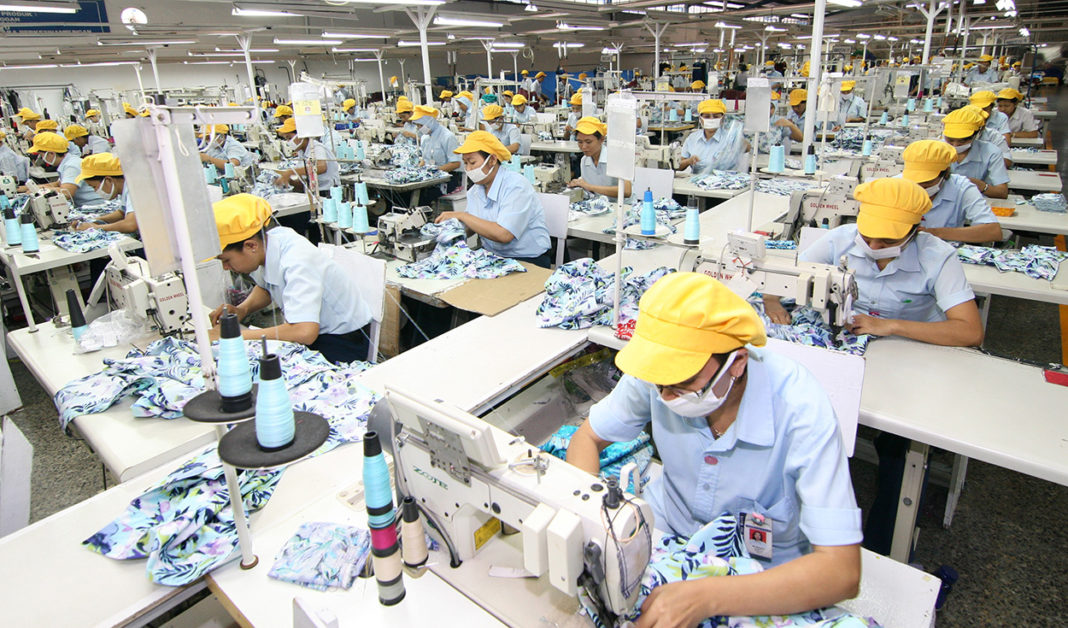
The Performance of Exports and Imports of Manufacturing is Moving Positively
The import acceleration also confirmed the data of gross domestic product (GDP) which shows an increase in investment in the country. Because the increase in imports was triggered by the class of raw materials / auxiliaries and capital goods that control more than 90% of the overall import. Imports of both types of goods are intended to meet the needs of domestic industries, thus indicating the existence of manufacturing stretch in the country.
Based on data from the Central Bureau of Statistics (BPS), Indonesia's imports in January 2018 reached US $ 15.13 billion, up 26.44% compared to January 2017. Exports reached US $ 14.46 billion, up only 7.86% January 2017. As a result, the trade balance recorded a deficit of approximately US $ 670 million. Based on the use of goods, both raw materials / auxiliaries, capital goods, and consumer goods increased significantly. The highest increase occurred in consumer goods, ie almost 33%. However, the group's presentation on imports was below 10%. Capital goods controlling imports of 16% rose 30% and raw materials / auxiliaries recorded rose nearly 25%.
Head of BPS Kecuk Suhariyanto said that the increase in raw / auxiliary raw materials import will be seen in the index of production increase in large and medium industries. Meanwhile, the rise in imports of capital goods is a reflection of increased investment. For the rise in imports of consumer goods, Kecuk suspects that the domestic demand has started to improve. Senior Deputy Governor of Bank Indonesia Mirza Adityaswara sees import acceleration, particularly raw materials / auxiliaries and capital goods, confirming GDP data showing an increase in investment level.
"If investment goes up, it will require raw materials, machinery and equipment. If there is an import acceleration, it indicates that domestic economic pickup is indeed happening. "According to Mirza, import acceleration will widen the current account deficit. BI estimates the current account deficit will expand by 2.1% -2.2% from 1.7% last year. Economist Indef Bhima Yudhistira said that imports of raw materials / auxiliaries and capital goods went into the era of normalization of the trade balance.
This condition is a positive signal that the manufacturing sector resumes production after Christmas and New Year holidays. Finance Minister Sri Mulyani Indrawati said the deficit did not become a problem because it was caused by increasing imports, especially goods for production purposes. Rising imports of raw materials and capital goods became the healthiest indicator of the rise of manufacturing and investment industries. The government, he continued, will keep a close watch on this condition by boosting exports and attracting investment, in order for the domestic economic situation to remain strong against the possibility of external risks arising.
Increasingly Expansive
The same thing was expressed by the Minister of Industry of Airlangga Har¬ tarto. According to him, the performance of imports also shows the industry can obtain the supply of raw materials well for the sustainability of production, and at the same time indicates more expansive manufacturing. Trade Minister Enggartiasto Lukita explains, indeed if viewed as a whole will look trade deficit. However, if you look at each sector, exports tend to increase.
Industry players acknowledged that manufacturers did increase imports of raw / auxiliary materials during January to respond to high public demand. Vice Chairman of Indonesian Trade Chamber of Commerce, Benny Soetrisno, said that the increase in raw material imports occurred in January 2018 due to the increased utilization of installed engine capacity. In the plastic packaging sector, Secretary General of the Aromatic, Olefin and Plastic Industry Association (Secretary General Inaplas) Fajar Budiono said there was an increase in demand for packaging from the food and beverage industry. As a result, members of the association increased their production.
 English
English Japan
Japan

sildenafil citrate 100mg coupons goodrx prices viagra in india i take red scam menopause and libido natural treatments
cialis gives me a headache women take viagra mexican pharmacies nogales viagra jokes cartoons viagra homme viagra india what was viagra's original intent online viagra viagra vision symptoms combining viagra and levitra how much does viagra cost viagra without a doctor prescription cialis over counter how much does viagra cost in mexico i need viagra overnight delivery how much does sildenafil cost viagra receptfritt glucometer samples for healthcare professionals mexican pharmacies shipping to usa viagra pour homme round blue pill no markings sildenafil citrate for sale low price viagra 100mg bestellen viagra viagra and blood pressure medication sildenafil citrate 100mg lowest price cialis 5 mg tablet gaia women's libido reviews snorting viagra walmart prescription list 2017 hrac mode of action
what exercises increase libido cenforce 200 funny viagra pictures doctor x viagra free phone number id indian fda approved drug manufacturers cialis 30 day coupon
side effects of flomax in men pictures of men's junk viagra women advantages of viagra for men gnc live well women's vitapak 50 free prints cvs code
baby product samples for pediatricians best female libido enhancers generic viagra viagra class action why is levitra so expensive walmart men's health supplements